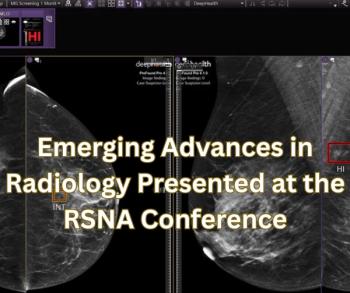
Drug-eluting stents reduce repeat treatment in peripheral arterial disease
Drug-eluting stents provide a significantly higher patency rate after three years in patients with critical limb ischemia compared with bare metal stents. Findings of a recent study suggest that drug-eluting stents can reduce also postintervention treatment rates.
Drug-eluting stents provide a significantly higher patency rate after three years in patients with critical limb ischemia compared with bare metal stents. Findings of a recent study suggest that drug-eluting stents can reduce also postintervention treatment rates.
Critical limb ischemia has reached epidemic proportions, leading to nearly a quarter million amputations and about $20 billion in associated management costs each year in the U.S. and Europe, according to the clinical literature. Stenting of the infrapopliteal arteries has been shown to improve the lives of many patients, but it remains hindered by high restenosis rates and, thus, need for repeat treatment.
The use of drug-eluting stents instead of bare metal ones in these tiny below-the-knee arteries may significantly affect patient care, according to coauthor Dr. Dimitris Karnabatidis, an assistant professor of interventional radiology at Patras University Hospital in Rion, Greece.
Karnabatidis and colleagues prospectively studied 103 patients with critical limb ischemia, mostly related to diabetes, who underwent infrapopliteal revascularization with angioplasty stenting using either drug-eluting (62) or bare metal stents (41). At three-year follow-up, an estimated 60% of treated arteries in patients with drug-eluting stents remained open compared with only 10% in patients treated with bare metal stents. The investigators released study findings at the 2009 SIR meeting.
"This corresponds to a more than five times increased risk of vessel reclogging when bare metal stents were used," Karnabatidis said.
Only 15% of patients in the drug-eluting stent group required repeat treatment after intervention compared with nearly 35% of those in bare metal stent group. Differences in the rates of restenosis and reintervention between the two groups were statistically significant (p<0.001 and p = 0.006, respectively).
The findings require multicenter randomized trial validation, a key step in obtaining FDA approval. Drug-eluting stents are approved in Europe for critical limb ischemia treatment, but their use in the U.S. is restricted to the coronaries. Results are promising, Karnabatidis said.
"Drug-eluting stents have emerged as a potential solution to the limitations of endovascular treatment of PAD patients with critical limb ischemia," he said.
For more information from the Diagnostic Imaging and SearchMedica archives:
Newsletter
Stay at the forefront of radiology with the Diagnostic Imaging newsletter, delivering the latest news, clinical insights, and imaging advancements for today’s radiologists.




























